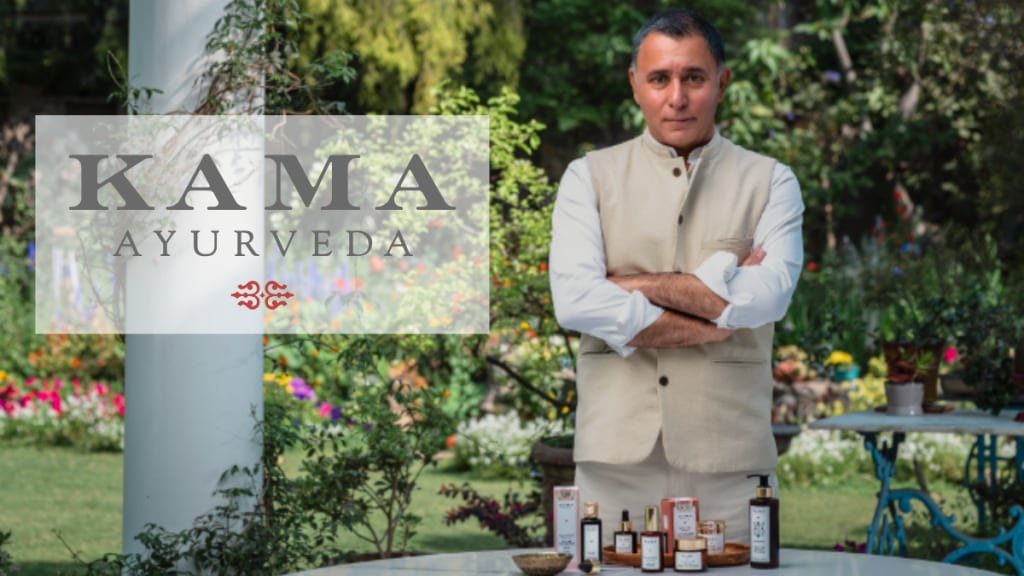Vivek Sahni never set out to build a brand. A designer by training, with no formal business education, he stumbled into entrepreneurship almost by accident. It was 2000 when the Khadi and Village Industries Commission tapped him to refresh Khadi, the handwoven fabric tied to India’s rural identity. The brief was straightforward: design a gift box. But Sahni, ever inquisitive, couldn’t leave it there. “I asked a basic question: ‘What happens if someone gets a rash from these products?’” he recalled in a conversation with BrandWagon Online. That single query, posed from a place of inexperience rather than strategy, sparked a journey that would transform him from an art school graduate into the architect of Kama Ayurveda. In FY23, Kama Ayurveda reported revenue of Rs 146 crore, with a loss of Rs 19.3 crore. In FY24, revenue rose 9.6% to Rs 160 crore, while losses narrowed by 37% to Rs 12.1 crore. The company is majority-owned by Spanish beauty group Puig, which holds an 85% stake.
The Khadi project quickly outgrew its modest origins. Sahni found himself collaborating with 10 to 12 institutions nationwide, delving into the nuts and bolts of product creation, far from the design sketches he knew. Village workshops, not high-tech labs, churned out the goods, prompting him to rope in government experts to ensure safety. They swapped synthetic dyes for natural alternatives, a shift that simplified production while preserving integrity. “It was my first real exposure to how things are made,” he admitted. When the initiative succeeded, demand followed, nudging him toward uncharted territory.
The turning point came in Coimbatore, where a friend, Rajshree Pathy, invited him to visit an Ayurvedic hospital. This was no roadside herbal stall but a proper medical facility—doctors treating patients with plant-based remedies, American researchers studying arthritis outcomes. “It dawned on me: this isn’t just tradition; it’s effective,” Sahni said. In his North Indian upbringing, Ayurveda was a murky, pungent memory of childhood ailments. Here, it was a living system, its potential overlooked by many in India, yet catching the eye of outsiders. He resolved to reclaim it, not as medicine, which lay beyond his expertise, but as beauty products for everyday use.
Thus, Kama Ayurveda was born—not from a grand business plan, but from a gut instinct to bridge heritage and modernity. The beauty market was already crowded, with brands tossing around “Ayurveda-inspired” labels like marketing confetti. Sahni drew a line in the sand. “We’re not inspired by Ayurveda. We are Ayurveda,” he stated firmly, a quiet rebuke to the diluters. Take their kumkumadi oil: it’s rooted in ancient recipes, bolstered by modern touches, Sahni claims. Quality trumps cost every time. When a pharmacist warned that a top-tier hair oil required seasonal, expensive ingredients—available just eight months a year—Sahni didn’t blink. “That’s fine. Let’s do it,” he replied. Priced at Rs 300-400 against the Rs 30 norm, it was a bold move, banking on efficacy over affordability.
Today, Kama’s products fetch Rs 1800, yet Sahni resists calling them luxury. “I saw it as an expensive necessity, not a splurge,” he explained. He pictured his customer as a working woman in her late twenties, maybe a mother, but the reality proved broader. “It’s not just one person—it’s the whole family,” he noted, describing how husbands and in-laws dip into the unisex range in shared Indian households. With 65 stores and a UK presence since November 2022, the brand is evolving—new serums, minimalist packaging, and a pivot toward a generation tiring of K-beauty’s shine. “Korean beauty’s had its run. Now it’s A-beauty’s time,” he predicted, eyeing Ayurveda’s global moment.
Sahni’s not swayed by passing fads. “Ayurveda isn’t a trend; it’s a system,” he insisted. In the UK, kumkumadi oil sells to a diverse crowd, not just South Asians, hinting at universal resonance. Plans for 30 revamped stores in India, featuring treatment rooms and doctors, aim to deepen the experience. Sampling remains key—70% of customers return after trying products through Kama’s own channels, a stat Sahni cited with pride.
Yet hurdles loom. At Rs 1800, Kama sits beyond reach for many in price-conscious India. The Ayurvedic beauty market, growing at 15-17% annually and worth billions, teems with players—some authentic, many less so. Can Kama stand out in the noise? Sahni shrugs off competition, focused on purity over rivalry. “I never thought, ‘What’s the other guy doing?’ I asked, ‘How do I make the best product?’” he noted.
With Kama’s revamped stores, including Khan Market, now reopened, Sahni’s story reads like a slow burn.. From a designer’s question to a global contender, he’s built Kama not with flash, but with a steady hand. Whether that’s enough to navigate a crowded, cost-sensitive market remains an open question. For now, Sahni bets on authenticity—and a family bathroom shelf—to carry him forward.
